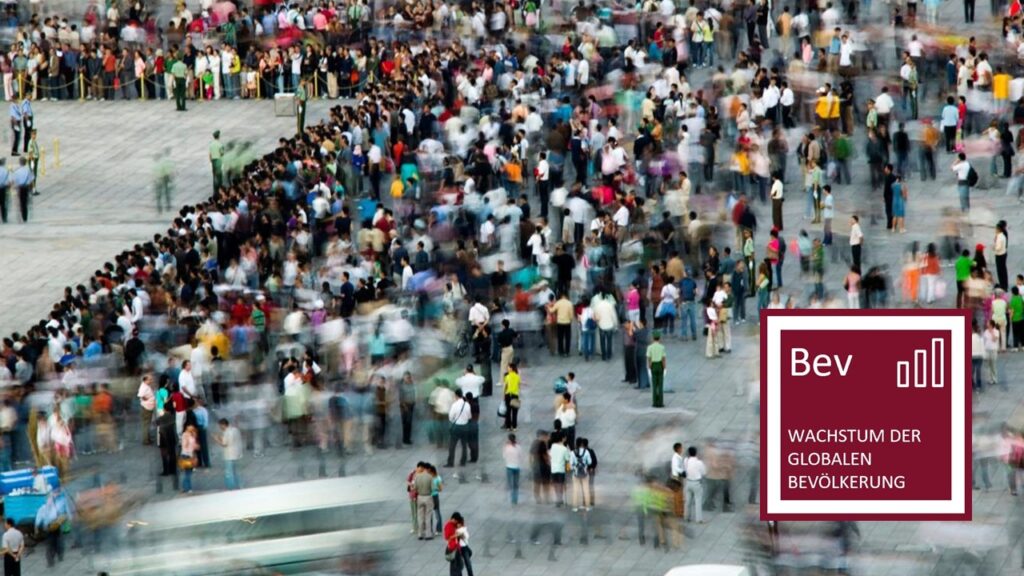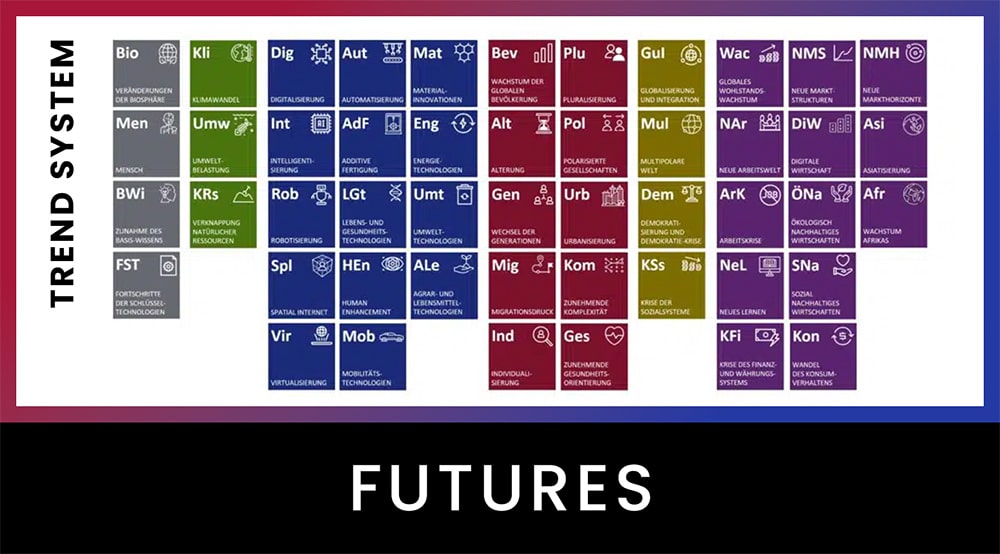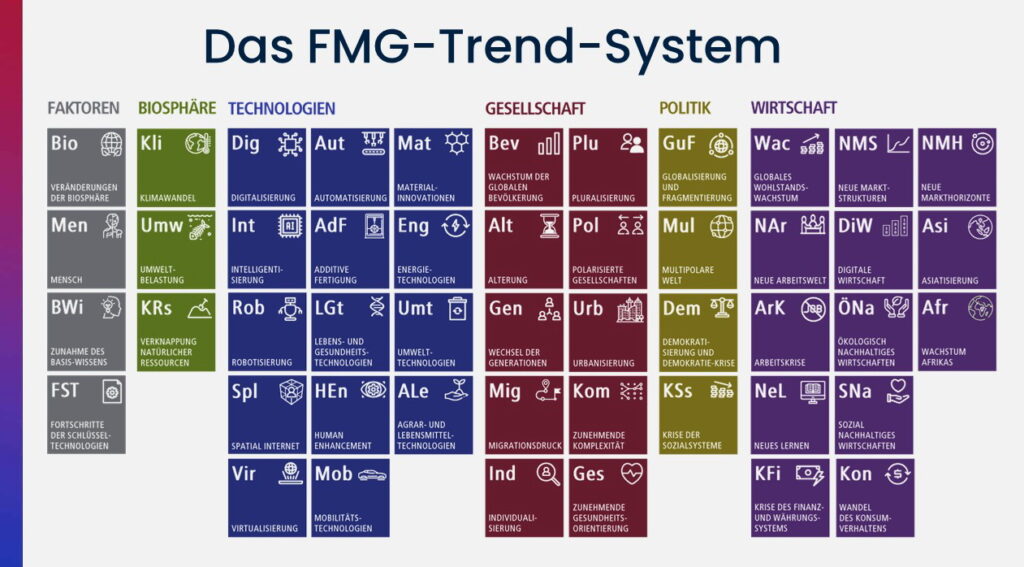Global population growth megatrend
From the FMG Trend System: For your future-proof company
Global population growth with far-reaching consequences
The megatrend of global population growth is changing the world in the long term, profoundly and sustainably. While the absolute world population continues to rise, demographic weights, age structures and regional development dynamics are shifting fundamentally. This megatrend is therefore influencing almost all areas of life and the economy – from healthcare, education, labor markets and infrastructure to resource consumption, shifts in political power and global migration.
Population trends are particularly dynamic in the regions of Asia and Africa, while demographic decline is expected in many industrialized countries. This development is creating new growth markets, but also poses major challenges for existing economic and social systems. To the overview of all megatrends

What does global population growth mean for companies?
Companies must adapt to an increasingly heterogeneous world, with growing young populations in emerging countries, ageing societies in industrialized nations and new demands on markets, workers and products.
For strategic planning and innovation management, it is important to analyze the consequences of this megatrend in a differentiated manner: Where are new demand structures emerging? How are urban spaces changing? Where will labor become scarcer and where will additional potential arise?
- Societies are changing profoundly, in their structure, their values and their behavior. The megatrend of global population growth is just one of many that could be relevant to the future of your business.
- FMG’s trend system makes these complex social developments tangible.
- In addition to megatrends from society, politics, the economy, technology and the biosphere, it also includes future factors as drivers of change.
- You can find out more about megatrends on our page Overview of all megatrends
Key developments in global population growth
1. population shrinkage in industrialized countries
While the world’s population continues to grow overall, many industrialized countries are already experiencing a significant population decline. A high proportion of baby boomers in the older age groups will lead to an increase in annual deaths in the coming decades, with the number of deaths significantly exceeding the number of newborns. This trend can only be offset to a limited extent by immigration, meaning that the working population will decline. Affected countries must adapt to structural shrinkage processes in the economy, society and spatial development. Important aspects are
Ageing of society: The proportion of older people is increasing, leading to higher burdens on pension and healthcare systems.
Shortage of skilled workers: A decline in the working population makes it difficult to fill jobs and inhibits economic growth.
Regional disparities: Urban centers remain growth poles, while rural regions continue to lose population.
Limited effect of migration: Immigration can only partially compensate for the demographic decline and requires integrative measures.
2. regional population decline
Various economic developments and increased mobility mean that more and more people are moving to economic growth centers. This is leading to an accelerated population decline in structurally weak areas. In Europe, especially in Germany, a shift from east to west can be observed. Cities and suburban municipalities often remain the only growth regions. The state and local authorities face the challenge of creating realistic and tangible future prospects for the regions affected. Important sub-aspects are:
Urbanization: Increasing concentration of the population in urban areas leads to infrastructural challenges.
Infrastructure decay: Shrinking regions are struggling to maintain infrastructure with declining capacity utilization.
Social inequality: Different demographic developments reinforce social and economic disparities between regions.
Political challenges: Regional shrinkage processes require adapted political strategies and support measures.
3. increasing demand for food
The growth of the world’s population and declining poverty are leading to an increasing demand for food, particularly fish, meat and high-quality processed products. By 2050, agriculture must produce 50 % more food worldwide. Limited arable land, competition for land from bioenergy and the consequences of climate change and environmental pollution could lead to food production falling short of demand and prices rising accordingly. Another problem is the unequal distribution of food; 800 million people worldwide still suffer from hunger. The term “peak food” is used to describe the possible achievement of maximum global food production. Increased efficiency in agriculture and a more sustainable diet are therefore becoming increasingly important. Key aspects are
Nutritional change: Rising demand for animal products increases the pressure on resources and the environment.
Technological innovations: Precision agriculture and biotechnological advances are intended to increase yields and conserve resources.
Sustainable nutrition: Promoting plant-based diets to reduce the ecological footprint.
Global food security: The need for international cooperation to ensure equitable food distribution.
Conclusion
The global population is growing, but not in the same way everywhere: companies need to take a differentiated view of regional differences.
Shrinking processes in industrialized countries require new concepts for work, care, infrastructure and consumption.
Urban areas are becoming increasingly relevant as growth centers, with their own challenges in terms of sustainability, transport and housing.
The supply of food and resources is becoming a key strategic task, also for companies outside the agricultural sector.
- With the Future Radar Program, you can identify at an early stage which demographic dynamics will influence your business model and how you can benefit from them.



































